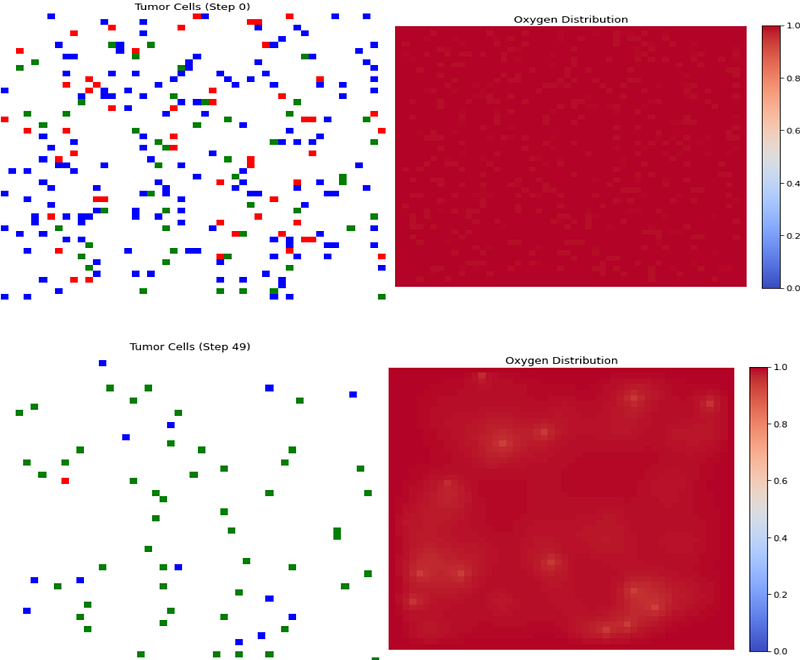Spatiotemporal Simulation of Radiotherapy Impact on Stage III Sigmoid Colon Cancer Using a Metabolically Coupled Agent-Based Model

Spatiotemporal Simulation of Radiotherapy Impact on Stage III Sigmoid Colon Cancer Using a Metabolically Coupled Agent-Based Model
Panchagnula, S. D. K.; Jonnala, P.
AbstractColorectal cancer (CRC), particularly sigmoid colon adenocarcinoma, presents complex therapeutic challenges at advanced stages. While fractionated radiotherapy combined with chemotherapy and immune involvement is clinically effective, its outcomes vary due to tumor heterogeneity, hypoxia, and treatment-induced resistance. This study develops a biologically grounded, lattice-based, agent-based model (ABM) of Stage III sigmoid colon cancer. The model simulates tumor cell proliferation, immune-tumor interactions, ATP-dependent metabolism, and oxygen diffusion via reaction-diffusion approximations. Tumor response to fractionated radiotherapy is governed by the Linear-Quadratic (LQ) model, with chemotherapy modeled as a radiosensitizer. Immune dynamics are represented both spatially and through a coupled ODE system. Simulations reveal progressive tumor volume reduction across radiotherapy fractions, emergence of resistant subclones in hypoxic zones, and variable immune infiltration based on comorbid factors. ATP levels regulate proliferation thresholds, while TCP/NTCP curves demonstrate dose-response windows. Survival fractions differ significantly between sensitive and resistant populations. This integrated ABM effectively captures the spatiotemporal evolution of CRC under radiotherapy and immune pressure. It provides a clinically meaningful platform to explore treatment outcomes, assess tumor control probabilities, and serve as a computational foundation for personalized therapy planning in colorectal cancer.